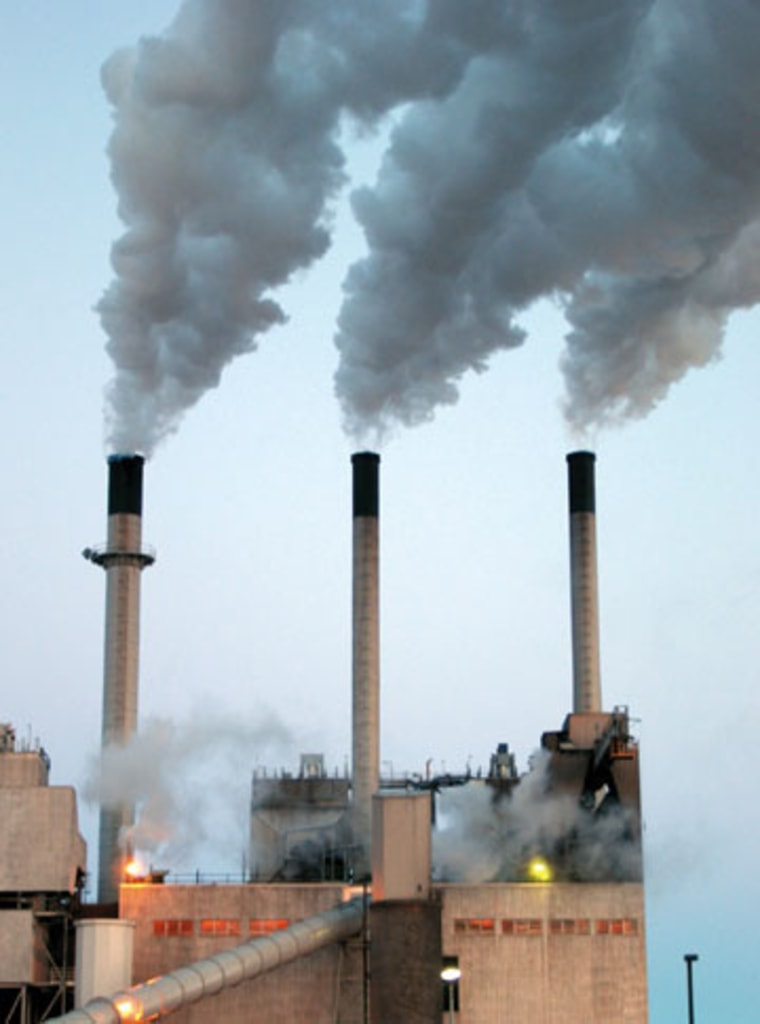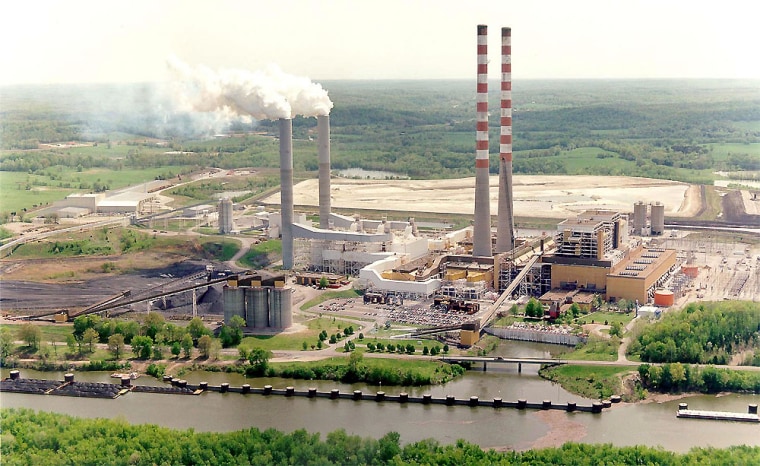Health problems linked to aging coal-fired power plants shorten nearly 24,000 lives a year, including 2,800 from lung cancer, and nearly all those early deaths could be prevented if the U.S. government adopted stricter rules, according to a study released Wednesday.
Commissioned by environmental groups and undertaken by a consultant often used by the Environmental Protection Agency, the study concluded that 22,000 of those deaths are preventable with currently available technology.
The groups criticized the Bush administration for trying to change existing clean air laws, which the report said would result in nearly 4,000 more annual deaths from asthma, heart attacks and other ailments linked to coal plant emissions.
“The Bush air pollution plan represents a step backward from simply enforcing current law,” said Angela Ledford, director of Clear the Air, a coalition that includes the National Environmental Trust, the Public Interest Research Group and the Clean Air Task Force.
EPA, utilities question data
The EPA said the report “doesn’t look at the whole picture,” and pointed to a suite of related rules limiting diesel and smog emissions that will have a cumulative impact.
Together, the rules “will bring nearly every community in America into attainment under our new, more protective health based air quality standards,” the agency said in a statement.
Industry lobbyists accused the report's sponsors of using flawed science and scare tactics to impugn utilities.
Some research “suggests that power plants aren’t the source of the problem” and that EPA should not impose stricter rules that could raise electricity rates, said Dan Riedinger of the Edison Electric Institute, an industry lobbying group.
The Electric Reliability Coordinating Council, which represents many coal-burning utilities, said the report ignored that soot pollution from power plants dropped by 75 percent from 1970 to 1999, based on EPA and Energy Department figures, while energy use rose 41 percent.
"If environmentalist critics and their allies succeed in using regulatory or litigation tactics to push for actions well beyond what is necessary for protection of human health and the environment, consumers will be hurt," council director Scott Segal said in a statement. "There is a profound impact on those living in poverty or on fixed incomes when inflexible regulatory approaches are adopted that discourage the use of coal."
Estimates for Bush, other proposals
A separate Bush administration proposal would require utilities to cut their emissions of sulfur dioxide and nitrogen oxides by 70 percent after 2015. Democrats and environmental groups unsuccessfully sought steeper cuts on a faster timetable.

The EPA estimated its new rules would result in 14,100 fewer annual deaths a year by 2020 from fine particles emitted by power plants that cause respiratory problems like asthma.
But the environmental groups’ report said that enforcing rules set by the existing Clean Air Act would prevent about 18,000 annual deaths over the same period.
The data was compiled by Abt Associates Inc., a consulting firm that the Bush administration and EPA have used to analyze their air-pollution policies.
Stricter cuts unsuccessfully sought by Sens. James Jeffords, a Vermont independent, and Joseph Lieberman, D-Conn., would prevent 22,000 of the 23,600 annual deaths attributed to plant pollution, the study found.
“Rather than move forward on legislation to make our air cleaner, we have spent the last three and a half years trying to prevent the Bush administration from weakening clean air standards,” Jeffords said in a statement.
2003 blackout slashed pollution
In a separate but related study, University of Maryland scientists reported Wednesday that the skies became dramatically cleaner when power plants had to shut down during the August 2003 blackout that hit the Northeast.
Measurements found a 90 percent reduction in sulfur dioxide, a gas that leads to haze and acid rain, and a 50 percent reduction in smog, or ground-level ozone. The amount of light-scattering particles in the air dropped by 70 percent and visibility increased by some 20 miles.
"In addition, skies cleared up far from some power plants. "The improvement in air quality provides evidence that transported emission from power plants hundreds of kilometers upwind play a dominant role in regional haze" and smog, the scientists write in a paper appearing in the next issue of Geophysical Research Letters.
"What surprised us was not so much the observation of improved air quality during the blackout, but the magnitude of the observed improvement," lead author Lackson Marufu said in a statement. "The improvement in air quality was so great that you could not only measure it, but could actually see it as a much clearer, less hazy sky."
Other findings, methodology
The activists' report also found that:
- People dying prematurely from problems associated with exposure to fine particle pollution, or soot, lost an average of 14 years.
- Power plant pollution is responsible for 38,200 nonfatal heart attacks and 554,000 asthma attacks each year.
- Pennsylvania, Ohio and Florida had the highest overall mortality rates each year, and West Virginia, Kentucky and Tennessee — states with a large number of coal-fired plants — had the highest per capita mortality risk.
The study relied on computer modeling to compare EPA data on power plant emission levels and dispersal patterns with results of epidemiological studies by Harvard University in 1993 and the American Cancer Society in 1995, said Ledford.
The data came from 2002 for soot — microscopic particles linked to asthma, heart disease and other health problems — along with acid rain-causing sulfur dioxide and smog-forming nitrogen oxides, Ledford said.
A state-by-state breakdown of the report is online at www.cleartheair.org/dirtypower.
